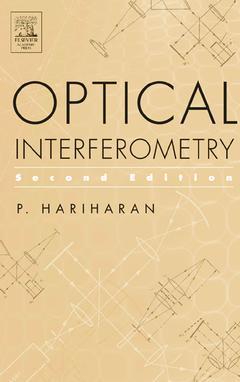Description
Optical Interferometry, 2e
Author: Hariharan P.
Language: English352 p. · 15x22.8 cm · Hardback
Description
/li>Contents
/li>Readership
/li>Biography
/li>Comment
/li>
When the first edition of Optical Interferometry was published, interferometry was regarded as a rather esoteric method of making measurements, largely confined to the laboratory. Today, however, besides its use in several fields of research, it has applications in fields as diverse as measurement of length and velocity, sensors for rotation, acceleration, vibration and electrical and magnetic fields, as well as in microscopy and nanotechnology.
Most topics are discussed first at a level accessible to anyone with a basic knowledge of physical optics, then a more detailed treatment of the topic is undertaken, and finally each topic is supplemented by a reference list of more than 1000 selected original publications in total.
A secondary market would be members of organizations such as the Optical Society of America, SPIE and IEEE who are interested in possible applications in their work.
- Historical development of interferometry
- The laser as a light source
- Two-beam interference
- Techniques for frequency stabilization
- Coherence
- Electronic phase measurements
- Multiple-beam interference
- Quantum effects in optical interference
- Extensive coverage of the applications of interferometry, such as measurements of length, optical testing, interference microscopy, interference spectroscopy, Fourier-transform spectroscopy, interferometric sensors, nonlinear interferometers, stellar interferometry, and studies of space-time and gravitation
These books may interest you

Digital Holography 178.13 €

Introduction to Optical Metrology 160.25 €

Vortex Laser Beams 304.89 €


